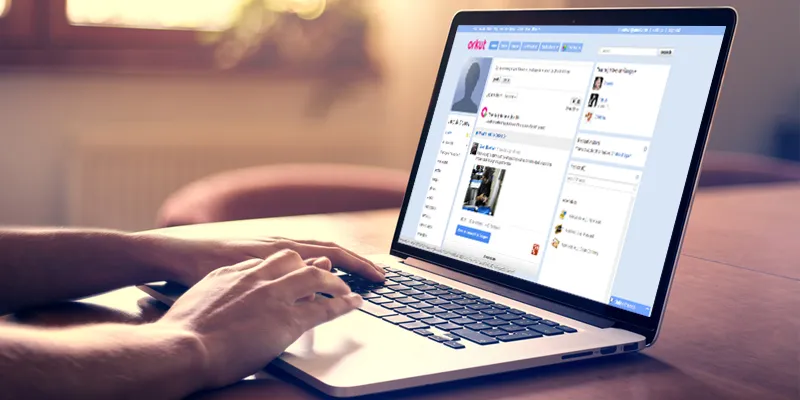Ghost of tech’s past: Discontinued apps, products and services
After rumours broke out that the beloved ‘Paint’ application was to be expelled from Microsoft’s upcoming Windows 10 update, users across all ages were up in arms seeking the 32-year-old app to be reinstated. The uproar was in response to a published company article, which positioned Paint under the ‘deprecated’ category in the upcoming update. However, as the company categorically reported in its latest post, the beloved MS Paint isn’t going anywhere.
“If there’s anything we learned, it’s that after 32 years, MS Paint has a lot of fans. It’s been amazing to see so much love for our trusty old app.”- it said.

Image: Shutterstock
This news may have relieved a third of the world’s population, but it brought back haunting memories of the innumerable tech properties – products, services and apps – which though thriving at one point, were put out of permanent circulation by the companies in question, or updated into having a new identity altogether.
In the form of a nostalgic throwback, here are the ones that we once loved and miss the most.
Napster
Created in 1999, Napster was the brain-child of young programmer Shawn Fanning. A pioneering service – the app made it easy for people to find and download music for free from the web. Within a year, the service had managed to procure users from across the world, hitting a peak of about 70 million users. Sean Parker, former co-founder of Napster, had back then pooled in his resources with Fanning, to make it a formidable and unparalleled music downloading service – a status it greatly enjoyed for a period of time.
However, by the summer of 2002 – chaos had descended upon the company. Not only was Napster bankrupt, but Fanning had left the company and the rage was at its fag end staring at innumerable lawsuits. Left with no option Napster name and assets were sold off to Roxio, for a whopping $5 million. Following this, it continued to serve as an online music store for a while, before it was acquired by Rhapsody from Best Buy in 2011. Despite its eventual fate, Napster was once everyone’s go-to service for downloading their favourite music – all for free.
Start button
Don’t you still miss the simple Windows ‘start button’, when you switch on your laptops and computers even in this day and age? The Start menu made its first appearance in 1995 with Windows 95 and became synonymous with Microsoft’s brand association for years to come.
The logo accompanying the start button and its placement has changed quite a few times over the years. Between Windows 98- 2000, the iconography and layout mostly remained the same, but a series of new functions were placed within and alongside it. Between Windows XP and Windows 7, Microsoft implemented its first overhauled change of the start menu, picking a blue and green theme for the same – and splitting it into two panes, with regularly used or pinned apps on the left, while quick access to documents, settings, help, and search services appeared on the right.
For Windows XP, Microsoft switched to a transparent menu and gave it a darker look and feel. The company also removed the "start" branding from the Vista Start menu, and replaced it with a Windows orb for the first time — a design which has continued till this day.
The company was at the receiving end of scathing backlash from users world-over when it removed the start button with Windows 8. It soon retracted its stance and provided the option in the updated Windows 8.1 version. However, it isn’t going to imitate the start button we know and love in any form, considering it is going to be accompanied and merged with its new Live Tiles services.
Google Talk
We’ve all sworn by Google Talk at some point in our lives. Google’s popular instant messaging service had at one point become the primary mode of direct communication – be it office or home, especially during the early 2000s. However, in 2013 it was replaced by the more accessible Google Hangouts, which initially had been released to be used as a side-lined feature-filled chat within Google Talk, but soon took over the older and more basic service.
All Google Talk users were forcibly converted into using Google Hangouts and while the essential service of instant messaging remains the same, Google Talk had a simpler, more agreeable measure of usage.
Orkut
Before Facebook became the linchpin of our social media existences, it was hi-5 and Orkut which introduced many to the realms of social networking platform. Orkut clearly emerged the more popular of the two and allowed its users to post ‘scraps’ and pictures on other’s ‘walls’ – a concept that Facebook definitely incorporated in its ‘wall’ feature.
With Facebook’s noticeable assent into the world of social networking during the 2006 to 2008 phase, Orkut fast started losing ground and after a few years of lying about being idle, was finally shut down by Google in September, 2014.
Google Health
Google Health, introduced in 2008, allowed users to share, maintain and manage all their health and wellness-related information in one hub. While the app was enthusiastically used by a certain age-group since its implementation, it failed to procure the kind of results that the company was hoping for.
Aaron Brown, senior product manager, Google Health had then said: "In the end, while we weren’t able to create the impact we wanted with Google Health, we hope it has raised the visibility of the role of the empowered consumer in their own care… we’re always working to improve our search quality for the millions of users who come to Google every day to get answers regarding their health and wellness queries." Google Health services was discontinued on January, 2012. Its users were, however, given the option to download their updated data till January, 2013 – following which it would be lost forever.
Songza
Songza, the once popular music streaming service, was acquired by Google Inc. in 2014 and later shut down by the same in January, 2016. According to reports, Google had paid more than $39 million for the music streaming service, which is all the more perplexing in terms of why they would have wanted to shut it down so abruptly. The mystery was solved when Google announced that it would be integrating all of Songza’s Concierge playlist features into its own Google Play Music service.
Winamp
After 15 years of glorious usage, popular media player Winamp was finally shut down in December, 2013. Winamp had been the rage during the 90s, but since it was acquired by AOL in 1999, its demand and very style waned in comparison to the other media players that were arriving in the market. Despite the fact that Winamp released both Android and Mac versions in 2010 and 2011, the end had already been a sign-off and with a final bang, the once favourite media player was removed from our technology and lives forever.







